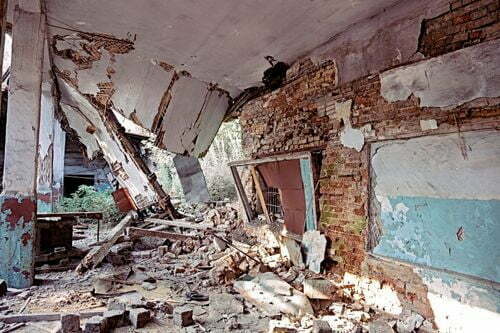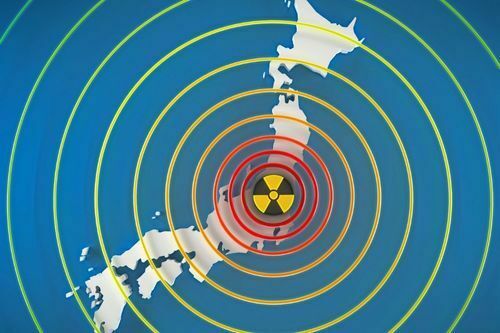Table of Contents
Earthquakes are purely natural ground vibrations brought on by the Earth’s energy release. Seismology, which means ‘study of shaking’ in Greek, deals with the study of earthquakes.
The goals of seismological investigations can be local, regional, or of global significance. Attempts to identify subsurface faults and other structures in petroleum or mineral exploration, the geophysical properties of island arcs, oceanic trenches, mid-oceanic ridges, or the elastic properties of Earth materials are all parts of seismological research.
Stresses caused by plate tectonics are the source of earthquake energy. Rocks on the margins of moving plates deform and absorb strain until the point of greatest weakness. The weak part causes a rupture to release the tension and an earthquake occurs.
What is seismology?

- Seismology is the study of earthquakes and seismic waves that travel through and around the earth.
- The instrument used for understanding the earth’s interiors as well as recording, amplifying and measuring the motion of the ground is known as a seismogram.
- A portion of the energy released after an explosion or earthquake is transported through the earth as elastic waves.
- Then, seismograms detect the waves and record them.
- The sites of earthquakes, subsurface structures, and other factors are then determined using the information.
Seismic waves
- When materials suddenly move within the Earth, they slip along a weak point during an earthquake, and hence, seismic waves are produced.
- Seismic waves can also be produced by volcanic eruptions, explosions, landslides, avalanches, and even swiftly flowing rivers.
- Seismometers can record seismic waves as they pass through and around the Earth.
Difference between seismometers, seismographs, seismograms
Although it is frequently and interchangeably used with ‘seismograph,’ a seismometer is the internal component of the seismograph, which can be a pendulum or a mass set on a spring.
Seismographs are tools used to capture ground motion during an earthquake.
They operate as a part of a seismographic network and are buried throughout the world. The Chinese scholar Chang Heng created the first ‘seismoscope’ in the year 132 A.D. However, this just served to signal that an earthquake was taking place; it did not record earthquakes. In 1890, the first seismograph was created.
A seismogram is a recording of the ground trembling at the exact spot where the sensor is placed. On a seismogram, the vertical axis represents ground displacement(usually measured in millimeters), and the horizontal axis represents time (measured in seconds).
Except for minor wiggles brought on by local disruption or ‘noise’ and the time markers, it shows merely a straight line when there is no earthquake reading.
Seismograms are now computerized and paper recordings are no longer used.
Types of seismic waves

Seismic waves come in different types and behave in various ways. Body waves and surface waves are the two primary forms of waves. Surface waves can only move over the Earth’s surface like water ripples, whereas body waves can pass through the planet’s core layers. Earthquakes produce both body waves and surface waves.
Applications of seismology
Measuring the rates at which seismic waves move through the earth is one component of seismology.
P or primary/compressional waves move through the earth’s crust quickly, whereas secondary/transverse waves cannot pass through liquids. This property enables scientists to distinguish the earth’s numerous boundary layers, including the crust, mantle, and core.
For nations that are prone to earthquakes, seismologists also create seismic risk maps that show the level of seismic threat. Seismologists also utilize earthquake data to pinpoint plate borders; active earthquake zones correlate with plate margins, both expanding and destructive, as well as transform faults.
The use of seismology in the search for oil resources is a significant commercial application. Texas was the location of the first oil field that was detected using this technique in 1924. Previously, explosives like dynamite were employed to create seismic waves, but they have been replaced with high-energy vibrators on land and air-gun arrays at sea. A portable seismograph is set up in the area to be researched, and an explosive energy source is ignited nearby.
Sometimes subsurface water can be found and the structure of the oceanic and continental crust can be discovered using seismic technologies. Seismographic stations for their detection were established all over the world as the underground testing of nuclear bombs advanced.
Key takeaways
- Seismology examines earthquakes and the propagation of seismic waves produced in the Earth’s interior and on its surface to understand the underlying structure, causes, and preventative measures for any harm caused.
- The energy released after an explosion or earthquake is transported through the earth as elastic waves. Seismograms detect the waves and record them. The sites of earthquakes, subsurface structures, and other factors are then examined using the information.
- Seismology enables scientists to distinguish the earth’s numerous boundary layers, including the crust, mantle, and core. The use of seismology in the search for oil resources is an important commercial application.
Did you find this blog informative? If so, please share your thoughts in the comments section below. Click here to contact us for more information on seismology. We would be happy to assist you with your queries.
Liked this blog? Read next: Smallest continent on the planet- Australia
FAQs
Q1. What is an example of seismology?
Ans- The geographical survey is an example of seismology.
Q2. Who invented seismology?
Ans- About a century ago, in 1889, Ernst Yon Rebeur-Pasebwitz discovered the first transient seismic record in Potsdam. John Milne and his collaborators in Japan created the first prototype of the modern seismograph.
Q3. What is the difference between geology and seismology?
Ans- Seismology is the study of elastic waves that travel through the earth, while geology is the study of the physical makeup of the planet. Seismology is the subfield of geology. Geologists research the rocks and minerals that are present in the crust of the earth.







